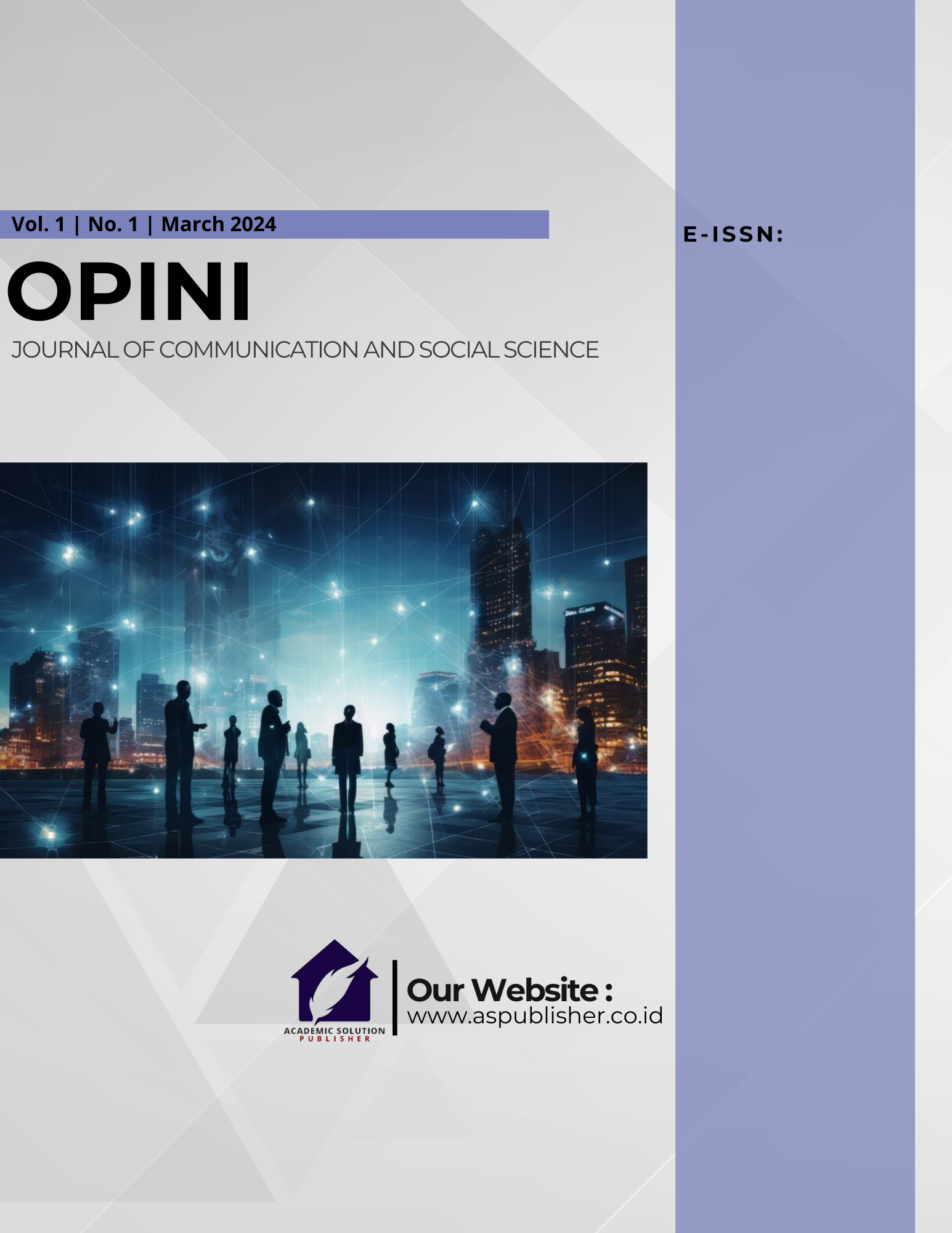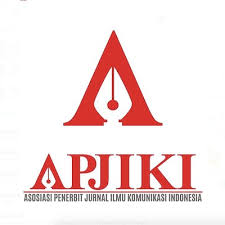THE ROLE OF GLOBALIZATION IN THE CULTURAL TRANSFORMATION OF JAVANESE COMMUNITIES IN TUNTUNGAN VILLAGE
DOI:
https://doi.org/10.70489/opini.v1i1.302Keywords:
Globalization, Cultural Change, Javanese, Tuntungan Village, Cultural Hybridity, ModernizationAbstract
This journal explores the impact of globalization on cultural changes among the Javanese community in Tuntungan Village, a community situated at the border between urban and rural areas in Indonesia. Utilizing a qualitative approach with ethnographic methods, this study focuses on aspects such as language, arts, traditional rituals, lifestyle, and social values. Data were collected through participant observation, in-depth interviews, and document analysis. The findings indicate an intensive mixing of Javanese, Indonesian, and foreign terms in daily communication, signaling a shift towards national and global languages. Traditional arts such as wayang kulit and ketoprak have been modified to attract younger generations, and hybrid art forms such as campursari have emerged as a creative adaptation to global influences. Traditional rituals such as Selamatetan and Mitoni are still maintained but have been simplified and adapted to fit modern lifestyles. The community's lifestyle has changed with the adoption of modern technology such as smartphones and the internet, along with a shift in consumption patterns towards global products and fast food. In education, there has been a shift from traditional knowledge-based education to a formal education system focused on global skills. Social values have also shifted from communal orientation towards higher individualism. This study emphasizes that the Tuntungan Village community actively negotiates and adapts to the currents of globalization, creating unique hybrid cultural forms. In this context, globalization not only brings cultural homogenization but also acts as a catalyst for the creation of new, complex, and dynamic cultures. The findings of this study provide important insights into how local communities respond and adapt to the challenges of globalization while maintaining the essence of their cultural identity.
References
Astria, G., Putri, D. Y., & Yasin, M. (2024). Hubungan Manusia, Masyarakat, Dan Budaya Di Lingkungan Gang Etam, Rt 35 Sangatta Utara. Jurnal Pendidikan Dasar dan Sosial Humaniora, 3(9), 645-658.
Badan Pusat Statistik. (2023). Survei Sosial Ekonomi Desa Tuntungan.
Costa, P. (2023). Valuing culture and creativity impacts in a global technological era: reshaping the analytical framework. In Rethinking Culture and Creativity in the Digital Transformation (pp. 49-68). Routledge.
Duxbury, N. (2021). Cultural and creative work in rural and remote areas: An emerging international conversation. International Journal of Cultural Policy, 27(6), 753-767.
EB, G. A. (2023). Globalisasi Budaya, Homogenisasi dan Pengaruhnya terhadap Identitas Budaya Lokal. Janaloka: Jurnal Ilmu Komunikasi, 1(2 DESEMBER), 71-80.
Eriksen, T. H. (2020). Globalization: The key concepts. Routledge.
Flew, T. (2020). Globalization, neo-globalization and post-globalization: The challenge of populism and the return of the national. Global Media and Communication, 16(1), 19-39.
Fanea-Ivanovici, M., & Pană, M. C. (2020). From Culture to Smart Culture. How digital transformations enhance citizens’ well-being through better cultural accessibility and inclusion. IEEE Access, 8, 37988-38000.
Huang, H., & He, J. (2021). When face meets globalization: how face drives consumers’ attitudes toward global consumer culture positioning. International Marketing Review, 38(1), 184-203.
Irawan, A. G., Harahap, M. H., Nasution, K. S., Hanafi, M. R., & Khalis, S. A. (2023). Tradisi Pertunjukan Wayang Kulit Bahasa Jawa: Studi Kasus Pertunjukan di Desa Sidoharjo-1 Pasar Miring, Kecamatan Pagar Merbau, Kabupaten Deli Serdang. Journal Of Human And Education (JAHE), 3(2), 197-202.
Kalfas, D., Kalogiannidis, S., Ambas, V., & Chatzitheodoridis, F. (2024). Contribution of the Cultural and Creative Industries to Regional Development and Revitalization: A European Perspective. Urban Science, 8(2), 39.
Keohane, R. O., & Nye, J. S. (2020). Globalization: What's new? What's not?(And so what?). In Making policy happen (pp. 105-113). Routledge.
Lumbaa, Y., & Amin, S. (2023). Pengaruh Budaya Westernisasi pada Generasi Z di Era Globalisasi. JESD: Journal of Education Social and Development, 2(2), 423-430.
Martynyshyn, Y., Khlystun, O., Adamonienė, R., & Dibrova, V. (2020). System analysis in socio-cultural management: theory, methodology and technology. Socio-Cultural Management Journal. Kyiv: Kyiv National University of Culture and Arts, 2020, vol. 3, no. 2.
Mesbahian, H. (2021). Recognition to Come: Towards a Deconstructive Encounter with Iranian Identity in a Globalized World. Religions, 12(1), 52.
Pacheco, E. M. (2020). Culture learning theory and globalization: Reconceptualizing culture shock for modern cross-cultural sojourners. New Ideas in Psychology, 58, 100801.
Putri, L. O., Dewi, D. A., & Hayat, R. S. (2023). DAMPAK MODERNISASI TERHADAP MINIMNYA KESADARAN BERBUDAYA. Sindoro: Cendikia Pendidikan, 2(2), 1-10.
Saputri, Y. W., Rhodinia, S., & Setiawan, B. (2024). Dampak Globalisasi Terhadap Perubahan Gaya Hidup di Indonesia. Maximal Journal: Jurnal Ilmiah Bidang Sosial, Ekonomi, Budaya dan Pendidikan, 1(5), 208-217.
Sucitra, I., & Sartini, S. (2020). Konsepsi lokal-global sebagai basis kultural berkesenian Sanggar Dewata Indonesia. Bahasa dan Seni: Jurnal Bahasa, Sastra, Seni, dan Pengajarannya, 48(2), 3.
Suradi, A. (2018). Pendidikan berbasis multikultural dalam pelestarian kebudayaan lokal nusantara di era globalisasi. Wahana Akademika: Jurnal Studi Islam Dan Sosial, 5(1), 111-130.
Swastiwi, A. W. (2024). Globalisasi dan Media: Konvergensi Budaya dan Komunikasi. PT Indonesia Delapan Kreasi Nusa.
Tahseen, E., & Al-Jumaily, S. K. (2020). Mechanisms for reviving the intangible cultural heritage to revitalize urban spaces. International Journal of Environment, Engineering and Education, 2(3), 31-42.
Downloads
Published
Issue
Section
License

This work is licensed under a Creative Commons Attribution-ShareAlike 4.0 International License.








